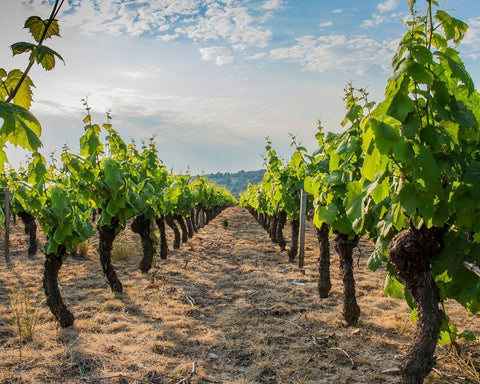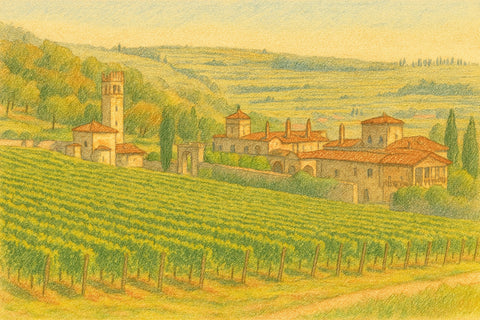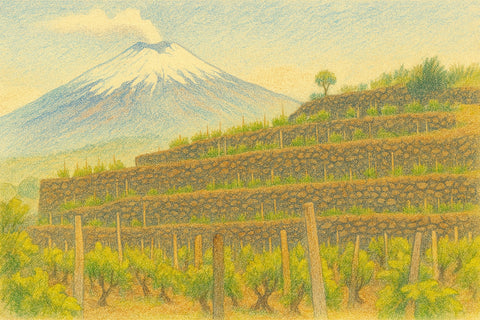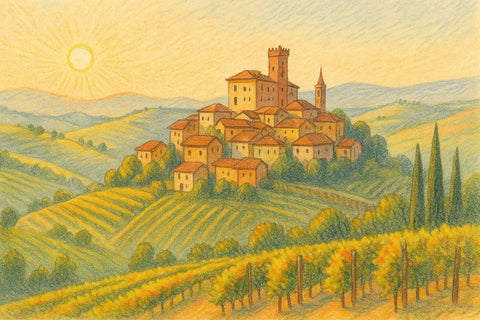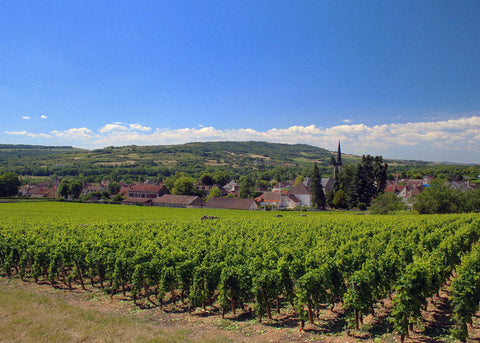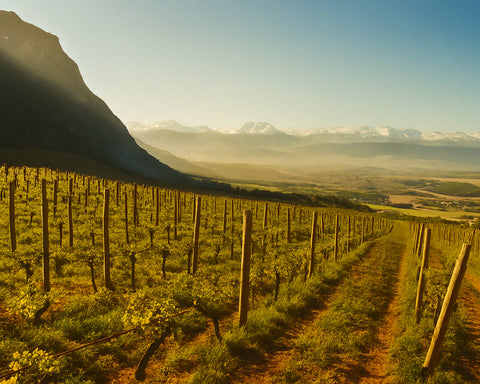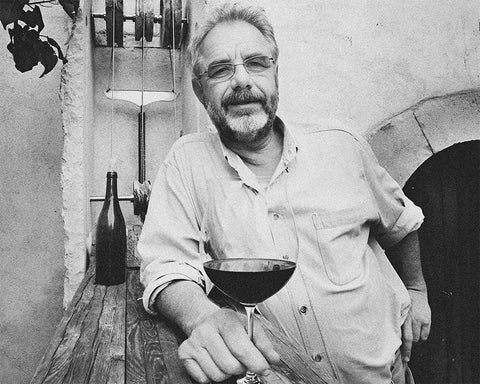Beaujolais, a picturesque wine region in eastern France, is renowned for its vibrant and fruity wines. Nestled between the southern tip of Burgundy and the city of Lyon, this region boasts a rich history and a unique approach to winemaking that has captivated wine enthusiasts worldwide.
Over the centuries, Beaujolais has evolved into a symbol of viticultural innovation, with a strong emphasis on terroir. The wines from Beaujolais, particularly the celebrated Beaujolais Nouveau and Cru Beaujolais, are more than just beverages; they encapsulate the region's cultural heritage and commitment to quality.
Beaujolais wines, especially those made from the Gamay grape, are known for their bright, juicy flavors and approachable style, making them a favorite among wine lovers around the globe.
Table of Contents
History of Beaujolais
Beaujolais, situated between Burgundy and Lyon, has always been a region of strategic importance, historically and viticulturally. Its history is a mosaic of cultural influences, from the Romans who first cultivated vines in the region to the medieval monks who maintained and expanded the vineyards.
Over the centuries, Beaujolais has transformed from a strategic trading post in Roman times to a key wine-producing region in France. The 19th century saw the rise of Beaujolais wines in international markets, driven by the construction of the railway system, which facilitated easier transport of the wines to Paris and beyond.
The tradition of Beaujolais Nouveau, an early-release wine that is celebrated annually, began in the early 20th century and has since become a global phenomenon, marking the beginning of the holiday season with festivities and celebrations.
The history of winemaking in Beaujolais can be traced back to the Romans, who recognized the region's potential for viticulture. Archaeological evidence indicates that the Romans planted vines in Beaujolais around the 1st century AD, laying the foundation for its future as a major wine-producing area.
Following the fall of the Roman Empire, monastic orders played a crucial role in preserving and advancing viticulture in Beaujolais. Monasteries became centers of agricultural knowledge, and monks meticulously maintained vineyards and documented their winemaking practices, ensuring the continuation of viticultural traditions.
The medieval period saw the rise of local nobility who further developed the region's winemaking potential. The Dukes of Burgundy, particularly, were instrumental in promoting Beaujolais wines. The 15th century marked a significant turning point as the Gamay grape became the predominant varietal, celebrated for its ability to produce light, fruity wines.
During the 19th century, Beaujolais experienced significant growth and development in its wine industry. The railway system's arrival allowed for easier wine transport to major markets, contributing to the region's economic prosperity. However, like many European wine regions, Beaujolais faced challenges like the phylloxera epidemic, which devastated vineyards and required extensive replanting efforts.
Despite these challenges, Beaujolais emerged resilient, with winemakers adopting innovative techniques and practices to enhance the quality and consistency of their wines. The 20th century saw the formalization of the Beaujolais appellation system, recognizing the region's unique terroir and winemaking traditions.
Terroir of Beaujolais
Beaujolais' terroir is characterized by its unique climate, topography, and soil combination. The region enjoys a semi-continental climate with influences from Mediterranean and continental weather patterns, providing ideal conditions for viticulture.
The hilly terrain of Beaujolais, particularly in areas like the Beaujolais Villages and Crus, offers optimal vineyard sites with excellent sun exposure and drainage. The soil composition varies significantly across the region, with granite and schist soils in the north and clay and limestone in the south imparting distinct characteristics to the wines.
This diverse terroir supports the cultivation of the Gamay grape, which thrives in Beaujolais' varied soil types, resulting in wines that express a wide range of flavors and aromas.
The Geology of Beaujolais
Beaujolais' landscape is predominantly hilly, with elevations ranging from 200 to 600 meters above sea level. The region is divided into several sub-regions, each with unique geological characteristics influencing the wine's style and quality.
- Northern Beaujolais: Known for its granite and schist soils, this area provides excellent drainage and mineral content, essential for producing high-quality Gamay grapes. The Crus of Beaujolais, including Morgon, Moulin-à-Vent, and Fleurie, are located here and are renowned for their complex and age-worthy wines.
- Southern Beaujolais: Characterized by clay and limestone soils, the southern part of the region produces lighter, fruitier wines that are often enjoyed young. The Beaujolais Nouveau wines primarily come from this area.
The region's geological diversity ensures that each sub-region can cultivate grapes that best match its soil type, enhancing the wines' expression and complexity.
Climate and Its Influence
Beaujolais' climate is semi-continental, characterized by warm summers and cold winters, with significant temperature variation between day and night. This diurnal range is crucial for grape ripening, allowing the development of sugars during the day and preserving acidity at night. The region's microclimates, influenced by the surrounding hills and valleys, further contribute to the distinctiveness of Beaujolais wines.
The Grapes of Beaujolais
Beaujolais is primarily known for its Gamay grape, which thrives in the region's diverse terroir. The grape's thin skin and high acidity make it well-suited for producing light, fruity wines enjoyed young.
Red Grape Varietals
- Gamay: The cornerstone of Beaujolais winemaking, Gamay produces wines with bright red fruit flavors, low tannins, and refreshing acidity.
White Grape Varietals
- Chardonnay: While less prominent, Chardonnay is grown in Beaujolais, producing crisp and aromatic white wines.
Top Wines of Beaujolais
Beaujolais Nouveau: This wine is perhaps the most famous product of the region, celebrated annually on the third Thursday of November. Beaujolais Nouveau is made from Gamay grapes and is known for its light, fruity character and vibrant red color. It is enjoyed young, often within weeks of harvest.
Beaujolais Villages: A step up in quality from the basic Beaujolais AOC, these wines come from designated villages in the region and offer more depth and complexity while maintaining the signature fruit-forward style.
Crus of Beaujolais: The highest quality wines in the region come from ten designated Crus, each with its unique character and style. Notable Crus include Morgon, known for its rich and structured wines; Moulin-à-Vent, often referred to as the "King of Beaujolais" for its age-worthy and robust wines; and Fleurie, celebrated for its elegant and floral wines.
Cru Beaujolais Appellations
The Beaujolais region is home to ten distinct cru appellations, each offering unique characteristics and expressions of the Gamay grape:
- Saint-Amour: Known for its floral and spicy notes, with a delicate structure.
- Juliénas: Offers robust flavors of red fruits and a hint of spice, often with a fuller body.
- Chénas: Noted for its deep color and complex aromas, including earthy and floral elements.
- Moulin-à-Vent: Often considered the most age-worthy, with firm tannins and rich, concentrated flavors.
- Fleurie: True to its name, known for its floral bouquet and silky texture.
- Chiroubles: Light and fresh, with vibrant acidity and bright fruit flavors.
- Régnié: Displays a balance of fruit and spice, with good acidity and structure.
- Morgon: Rich and powerful, with flavors of ripe fruit and a hint of earthiness.
- Brouilly: The largest cru, offering a variety of styles but generally characterized by fresh fruit flavors.
- Côte de Brouilly: From vineyards on volcanic slopes, producing wines with a distinctive minerality.
Cuisine and Typical Products of Beaujolais
Beaujolais' culinary traditions are deeply intertwined with its wine culture, offering a rich array of dishes that complement the region's vibrant wines. The cuisine of Beaujolais is characterized by hearty, rustic dishes that highlight local ingredients and traditional cooking methods.
Beaujolais Antipasti
Meals in Beaujolais often begin with a selection of antipasti, showcasing the region's diverse flavors and setting the stage for future courses. A typical antipasti spread might include:
- Terrine de Campagne: A country-style terrine made with pork and liver, seasoned with herbs and spices. It is served with crusty bread and cornichons.
- Rillettes de Porc: A spread made from slow-cooked pork, seasoned with garlic and thyme, and served with toasted baguette slices.
- Salade Lyonnaise: A salad of frisée lettuce, bacon, croutons, and a poached egg, dressed with a tangy mustard vinaigrette.
- Escargots à la Beaujolaise: Snails cooked in garlic butter and Beaujolais wine, a local twist on a French classic.
Beaujolais Primi Piatti (First Courses)
The first course in a Beaujolais meal often features hearty soups, stews, and pasta dishes that highlight the region's grains and seasonal vegetables.
- Soupe à l'Oignon: A rich onion soup topped with a crusty bread slice and melted Gruyère cheese. It's a comforting dish that pairs well with Beaujolais wines.
- Quenelles de Brochet: Pike dumplings served in a creamy sauce made with crayfish or lobster. This dish is a nod to the region's proximity to the Saône River.
- Gratin de Macaroni: A baked pasta dish with a creamy béchamel sauce, ham, and Gruyère cheese, offering a comforting and hearty start to the meal.
- Ratatouille Beaujolaise: A variation of the classic Provençal dish featuring eggplant, zucchini, bell peppers, and tomatoes, cooked with a splash of Beaujolais wine.
Beaujolais Secondi (Second Courses)
Beaujolais is known for its high-quality meats, particularly beef, and pork, often prepared in traditional, rustic dishes that highlight the region's culinary heritage.
- Boeuf Bourguignon: A classic French beef stew made with red wine, mushrooms, onions, and carrots. While traditionally associated with Burgundy, this dish is also popular in Beaujolais.
- Cochon à la Beaujolaise: Pork cooked in Beaujolais wine, with garlic, onions, and herbs, served with potatoes or root vegetables.
- Poulet à la Crème: Chicken cooked in a creamy sauce with mushrooms and white wine, often served with rice or pasta.
- Saucisson Beaujolais: Sausages cooked in Beaujolais wine, typically served with lentils or mashed potatoes.
Beaujolais Contorni (Side Dishes)
Beaujolais cuisine includes a variety of vegetable-based side dishes that complement the region's main courses and highlight the local produce.
- Gratin Dauphinois: A creamy potato gratin made with thinly sliced potatoes, cream, and garlic, baked until golden and tender.
- Haricots Verts Amandine: Green beans sautéed with butter and almonds, offering a simple yet flavorful accompaniment to meat dishes.
- Ratatouille: A traditional vegetable stew made with eggplant, zucchini, bell peppers, and tomatoes, flavored with herbs de Provence.
- Pommes Sarladaises: Sliced potatoes sautéed in duck fat with garlic and parsley, a rich and savory side dish.
Beaujolais Fromages (Cheeses)
Beaujolais produces several renowned cheeses that are often enjoyed at the end of a meal, paired with local wines.
- Saint-Marcellin: A soft, creamy cheese made from cow's milk with a rich and tangy flavor.
- Rigotte de Condrieu: A small goat's milk cheese with a soft, crumbly texture and a fresh, tangy taste.
- Charolais: A goat's milk cheese with a firm texture and a nutty, slightly sweet flavor.
- Brillat-Savarin: A triple-cream cow's milk cheese that is rich, creamy, and decadent, often served with fruit or crusty bread.
Beaujolais Dolci (Desserts)
Desserts in Beaujolais often feature local fruits, nuts, and chocolate, providing a sweet conclusion to a meal.
- Tarte aux Pralines: A sweet tart made with a vibrant red praline filling, typical of the Lyon region.
- Clafoutis aux Cerises: A baked custard dessert studded with fresh cherries, enjoyed throughout the region.
- Pain d'Epices: A spiced honey cake, often served with a dollop of crème fraîche or a slice of blue cheese.
- Nougat de Montélimar: A chewy confection made with honey, almonds, and pistachios, reflecting the region's love for nuts and sweets.
Typical Products of Beaujolais
Beaujolais' cuisine is based on high-quality local products, many of which have achieved protected status, ensuring authenticity and traditional production methods.
Charcuterie: From Farm to Table
Beaujolais is known for its exceptional charcuterie, with local butchers and artisans producing a wide variety of cured meats and sausages.
- Jambon Persillé: A terrine made with ham and parsley, bound together in a savory jelly, often enjoyed as an appetizer.
- Rosette de Lyon: A cured sausage made from pork, seasoned with garlic and pepper, and aged to develop its characteristic flavor.
- Saucisson Sec: A dry-cured sausage that is a staple in Beaujolais cuisine, perfect for picnics and casual meals.
- Andouillette: A traditional sausage made from pork intestines, known for its robust and distinctive flavor.
Vegetables and Fruits
Beaujolais' varied climate allows for the cultivation of a wide range of produce, which features prominently in local cuisine.
- Crottin de Chavignol: A goat's milk cheese from the neighboring Loire Valley, often enjoyed in salads or as a dessert.
- Cherries: Beaujolais is known for its cherry orchards, with fresh cherries used in desserts and preserves.
- Poires de Beaujolais: Pears grown in the region are celebrated for their sweet and juicy flavor, often featured in tarts and compotes.
- Lentilles Vertes: Green lentils from the region are prized for their nutty flavor and firm texture, commonly used in salads and side dishes.
